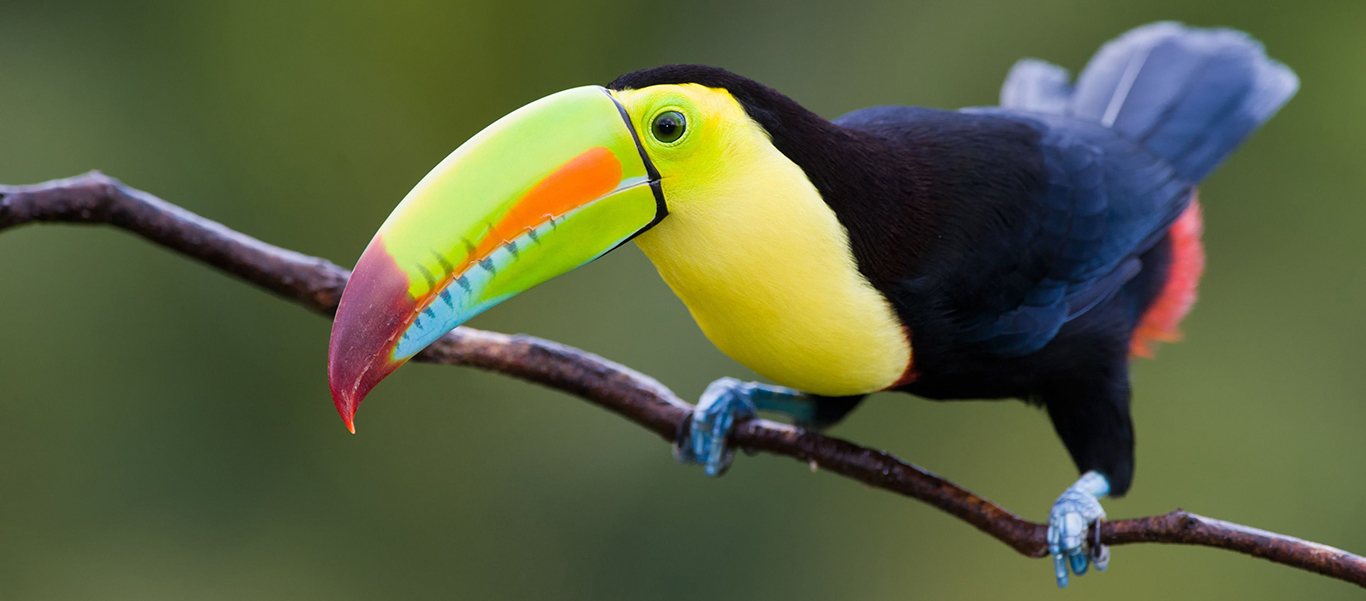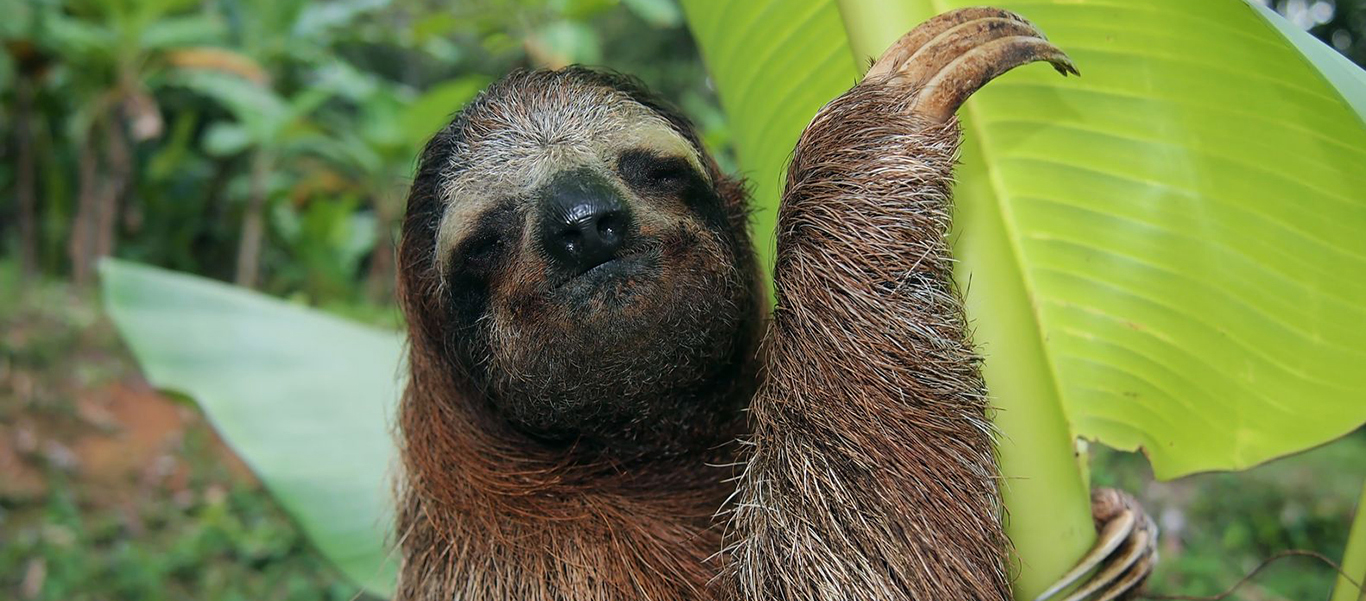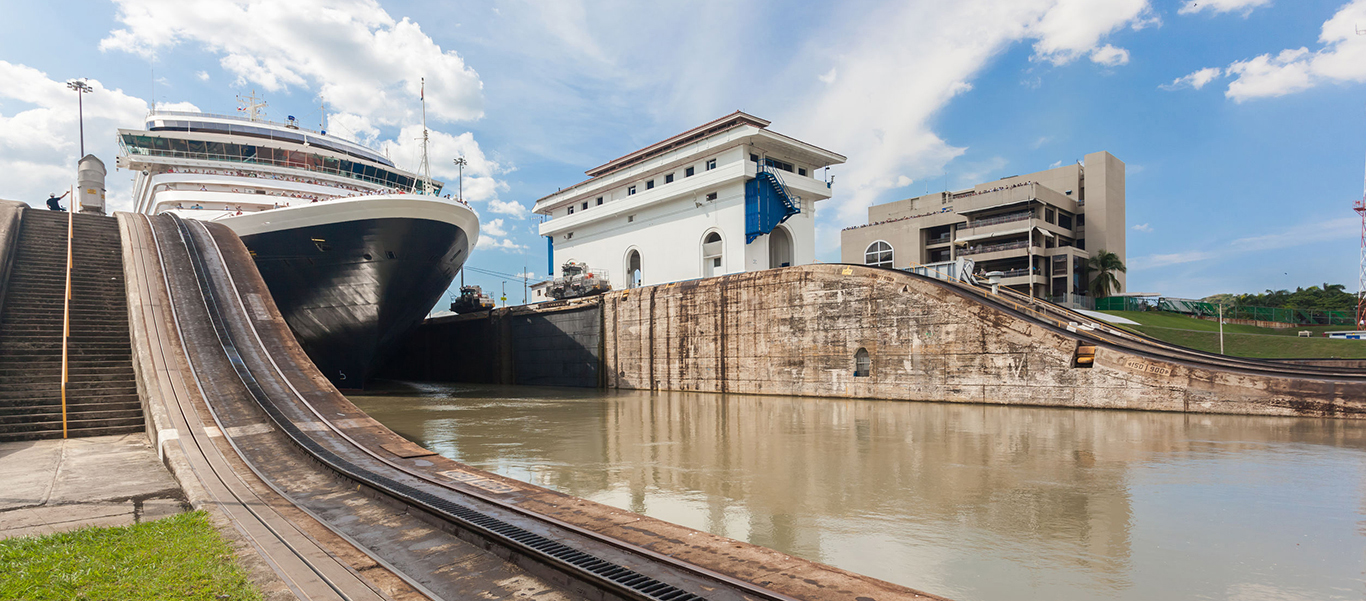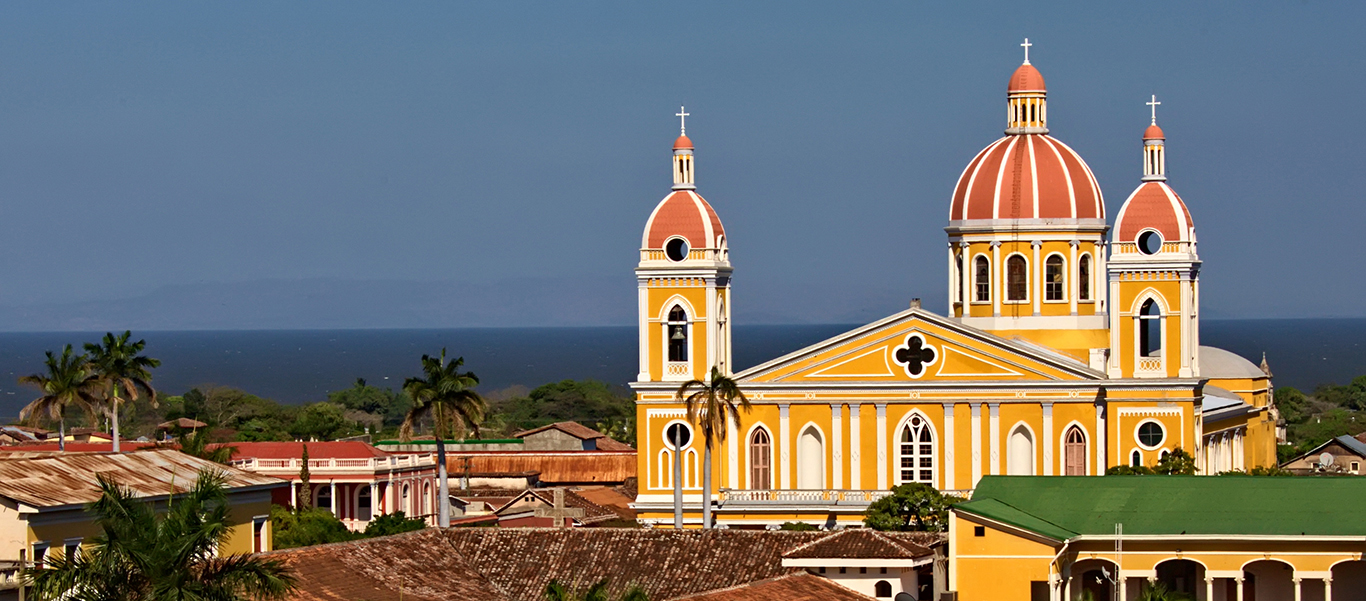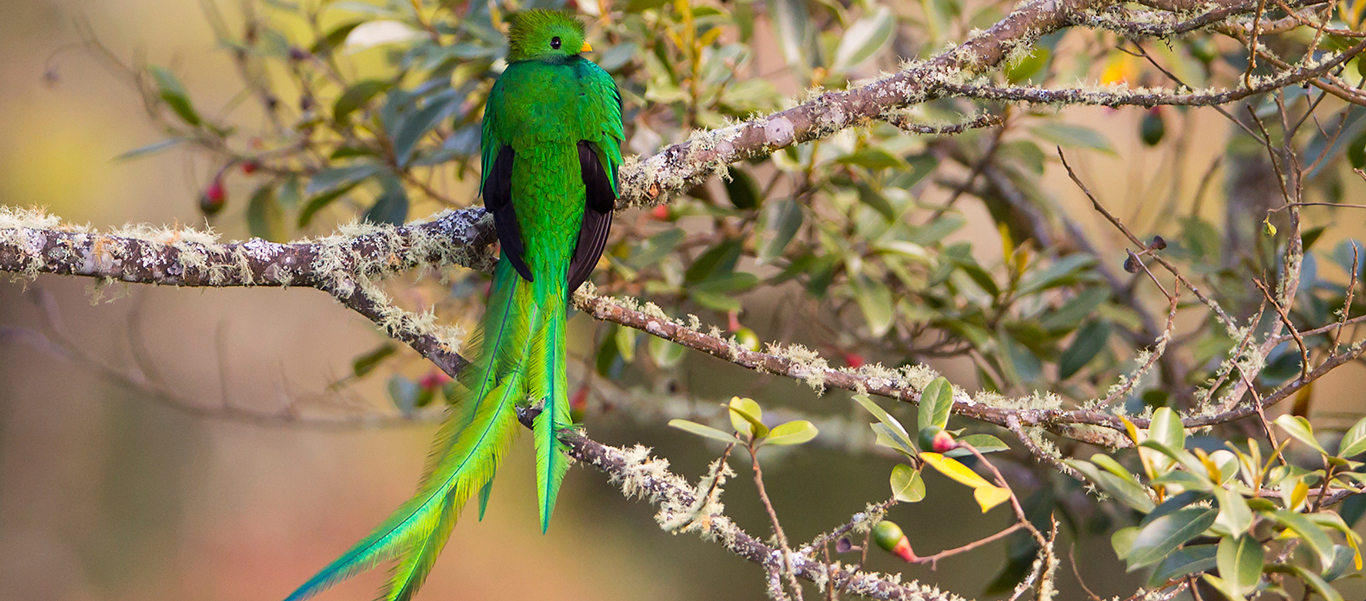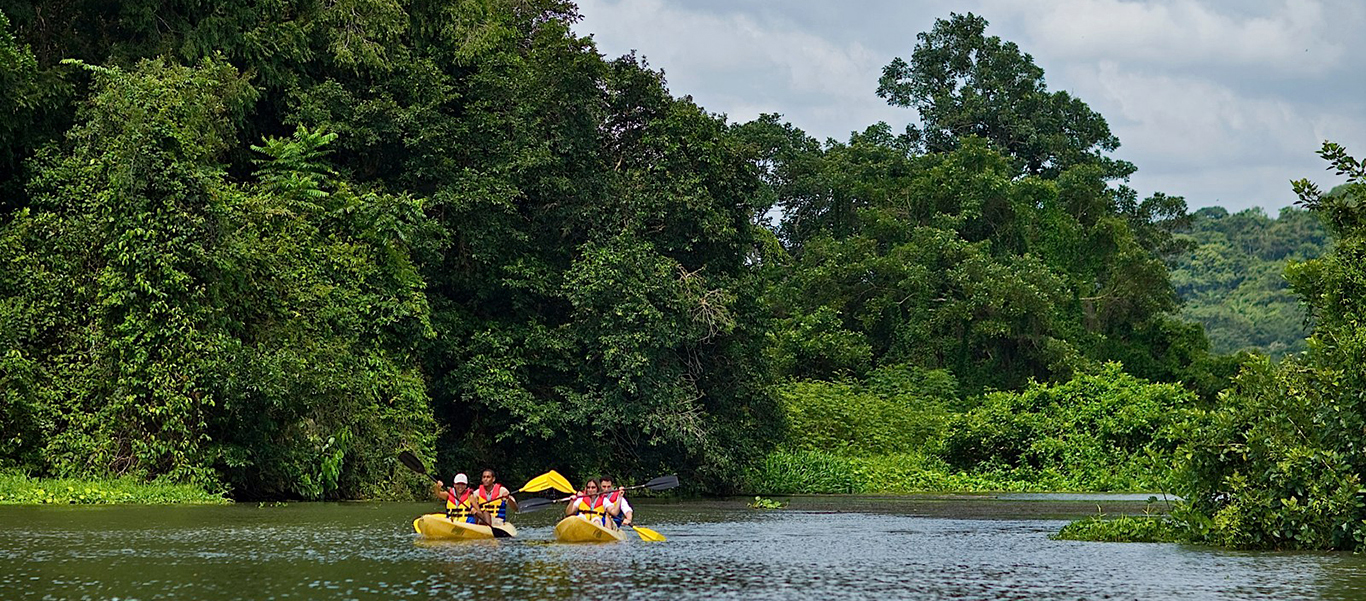Nicaragua & Panama
Nicaragua & Panama Tour
Nicaragua and Panama are not commonly known as prime ecotourism destinations. Join Apex as we celebrate this fact and explore these wildlife-filled gems before the crowds catch on. Panama, a nation the size of South Carolina, has more bird, mammal, reptile and plant species than the US and Canada combined. Nicaragua, the ‘Land of Lakes and Volcanoes’, has designated nearly one-fifth of its territory as protected parks and reserves. Explore pristine tropical habitats, as well as fascinating cultural monuments. Listen for the call of the Resplendent Quetzal. Search for sloths in the treetops. Cruise down peaceful jungle streams among crocs and caimans. Tour Granada and Panama Viejo, the first European cities in the Americas. Take a ship through the famous Panama Canal on the heels of its 100th anniversary. See the very best of Central America’s best-kept secrets on this 15-day journey of discovery.
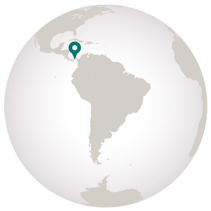
Destinations
- Travel by Air
- Travel by Road
- Travel by Boat
- Travel by Bullet Train
- Travel by Rail
- Travel by Dog Sled
-
Thursday, February 4: Arrive Managua
Arrive in Managua, Nicaragua’s sprawling and spirited capital city, and transfer to our hotel, located in the heart of the entertainment district. Gather this evening for a welcome dinner and briefing. Overnight at the Real Intercontinental.
-
Friday, February 5: Solentiname Archipelago
After breakfast, drive the length of the 3,100-square-mile Lago Nicaragua, Central America’s largest lake, to the bustling port city of San Carlos. At the festive malecón (waterfront), board a private boat headed for the Solentiname Archipelago, located about 10 miles offshore. En route, circle tiny Isla El Zapote, known as the “Bird House,” as it is a nesting site to more than 12,000 cormorants, herons and spoonbills. At the larger Isla La Venada, see the home of Rodolfo Avellano, the best known painter in Solentiname’s world famous Escuela Primitivista, an art movement established by a group of local fishermen in the 70s. After lunch on neighboring Isla San Fernando, enjoy a tour through the Corredor de los Pintores, the waterfront walkway where many local artists are based. Visit the tiny MUSA (museum), to learn more about the islands’ natural and cultural history. Dinner and overnight at Cabañas Paraiso Hotel on Isla San Fernando.
-
Saturday, February 6: Solentiname / El Castillo
Rise early for a walk on the Trogón Trail, wending through orchid-laden rainforest and ending at a pre-Columbian petroglyph. After breakfast, take a boat to the Los Guatuzos Research Center. Cruise down the Río San Juan, watching iguanas and turtles on the banks. Nearly 400 bird species live here, including water birds like Purple Gallinules, plus orioles, tanagers, and trogons. The cruise concludes at the Centro Ecologico, where you can tour the research facilities, including caiman and turtle ponds, and enjoy a walk over a series of hanging bridges with good views into the canopy. Look for all three monkey species present in Nicaragua—Howler, Spider, and White-faced Capuchin—sloths, and the brilliant Blue Jeans Poison Dart Frogs peering out from the heliconias. Continue along Río San Juan to the town of El Castillo. Settle into your hotel near the towering 17th-century fortress, built to protect the area from pirates. This evening, set out for some caiman viewing under the stars. Dinner and overnight at the Victoria Hotel.
-
Sunday, February 7: El Castillo
After breakfast, head downstream to reach the Indio-Maíz Biosphere Reserve, the biggest lowland tropical rainforest north of the Amazon. Hike along the Bartola River and search for brilliantly colored toucans, macaws, the nearly-extinct Green Parrot, and the exceedingly rare Northern Royal Flycatcher. Other animals include monkeys, sloths, Jaguar, tapir, manatee, and the world’s only freshwater shark, the Nicaragua Shark. Enjoy lunch at El Refugio Bartola, then step into canoes for a different view of the Bartola River. Head slowly upstream, watching for wildlife, including Jesus Christ Lizards, electric dragonflies, and heliconia butterflies. On a warm day, you can swim in the river’s crystal-clear waters. Dinner in El Castillo, and overnight at the Victoria Hotel.
-
Monday, February 8: Granada
After breakfast, a trip back up to northern Lake Nicaragua will bring you to Central America’s oldest European settlement, the exquisite 16th-century Granada, brimming with local history and Spanish colonial charm. This afternoon, visit the renowned open-air market at the ancient village of Masaya, where the world’s finest handmade hammocks, as well as wood, leather, and clothing are on offer. Continue on to Masaya National Park, the first national park in the country, for a night tour of the hulking Masaya Volcano. Arrive just before sunset and watch bats fly en masse from their roosting caves. Observe the famous Pacific Parakeet, which has adapted to sulfur smoke and manages to live within the volcano’s toxic crater walls. Walk through an underground tunnel formed by lava streams, and look inside the crater mouth to see the red, glowing lava. Dinner and overnight at the elegant Hotel Plaza Colón in Granada’s historical center.
-
Tuesday, February 9: Granada
After breakfast, visit the 4,600-foot Mombacho Volcano and its surrounding cloud forest, harboring over 50 species of mammals and 174 birds. Keep an eye out for the dazzling crimson-breasted, emerald-plumed Resplendant Quetzal as you travel past coffee plantations, through the cloud forest, to the volcano top. Hike a trail that wends around the volcano’s three craters. If the day is clear enough, you can see the city of Granada, Masaya’s smoking volcano, Lake Nicaragua, and the Solentiname Islands from here. Howler monkeys are frequently seen scampering in the trees overhead. This afternoon, visit the orchid nurseries of the beautiful, indigenous villages of Catarina and San Juan de Oriente. Return to Granada for a walking tour of its magnificent historical center. Explore the stunning La Merced Cathedral and La Fortaleza, boasting the city’s best views. Enjoy dinner at a local restaurant then return to the Hotel Plaza Colón for the night.
-
Wednesday, February 10: Granada / Gamboa
Enjoy a leisurely breakfast and the morning to stroll the cobblestone streets of Parque Central, with its vibrantly-colored horse carriages that have been carting people around since 1524. Afterwards, bid farewell to Nicaragua as you transfer to the airport in Managua for your flight to Panama. Arrive at the Panama City airport and take a short drive to Gamboa Rainforest Resort, located within the wildlife-rich Soberanía National Park, on the banks of the Panama Canal. Dinner and overnight at Gamboa Rainforest Resort, with sweeping vistas of the jungle-flanked Río Chagres.
-
Thursday, February 11: Gamboa
Early this morning, drive to the nearby town of Gamboa. Board an expedition boat on the 164-square-mile Gatún Lake, created in 1914 to provide water for the Panama Canal’s locks system (52 million gallons of water are needed for every ship that crosses the canal). Pass gigantic cargo ships as you head to the lake’s coves, inlets, and rainforest-shrouded islands to look for capuchin and howler monkeys, tamarin, Three-toed Sloth, crocodile, Osprey, Snail Kite and Keel-billed Toucan. Return to the lodge for lunch, then explore Soberanía Park on foot, or optional aerial tram or kayak tour. Later this afternoon, take a tour of the Smithsonian Tropical Research Institute in Gamboa, where the Panama Amphibian Rescue and Conservation Project works to save priority species of frogs in Panama, one of the world’s last strongholds for amphibian biodiversity. Visit the Project’s “pods,” where it has successfully bred several critically endangered frog species. Dinner at Miraflores Restaurant, and overnight at Gamboa Rainforest Resort.
-
Friday, February 12: Gamboa
Early this morning, depart for the Cerro Azul foothills, contiguous with Chagres National Park in the eastern Panama Canal watershed region. The area is a birdwatcher’s dream, as many species not found in the canal corridor can be easily spotted here. See Rufous-crested Coquette, Violet-capped Hummingbird, and even the soaring Black-and-white-Hawk Eagle. The elfin forest that grows on the slopes of Cerro Jefe, the area’s tallest mountain at 3,200 feet, is a favorite among Eastern Panama specialties such as tanagers, Three-striped Warbler, and Purplish-backed Quail-Dove. Take in spectacular views from the mountain’s peak—on clear days, you can see both the Pacific and Atlantic Oceans. On the way back down, stop at Birder’s View, the house owned by the Panama Audubon Society, and enjoy a meeting with the Society’s president. Dinner and overnight at Gamboa Rainforest Resort.
-
Saturday, February 13: Gamboa / David / Boquete
A morning trip to the famous Pipeline Road is sure to be a highlight for bird lovers—when the Audubon Society did a count here in 1985, 385 species were identified in 24 hours. See such specialties as Collared Aracaris, Chestnut-mandibled Toucan, and Purple-throated Fruitcrow. Climb the 120-foot Discovery Center tower to look for canopy dwellers like the brilliant Blue Cotingas, parrots, and cuckoos. After lunch, tour the Panama Canal Visitors’ Center at Miraflores Locks. Learn about the canal’s history, operation, and current expansion work, and enjoy great views of the locks and ships in motion. Then board a flight to David, capital of the Chiriquí province, in western Panama. Chiriquí is the country’s “breadbasket” and contains some of the most breathtaking highland scenery in Central America. A drive to the eastern side of the dormant Barú Volcano takes you to the town of Boquete, nestled in an extraordinary cloud forest and known as the “Napa Valley of Coffee.” Dinner and overnight at Finca Lerida Lodge on one of the area’s historic coffee plantations.
-
Sunday, February 14: Boquete
This morning, explore the intricate trail system of Finca Lerida. At 7,500 feet above sea level, the private preserve affords you the opportunity to see the elusive Resplendent Quetzal, Three-wattled Bellbird, Black-faced Solitaire, Volcano Hummingbird, Long-tailed Silky-flycatcher and Prong-billed Barbet in their preferred habitat of orchids, bromeliads and wild avocados. This is the most accessible region of Chiriquí’s highlands, and the estate’s trails continue for miles into La Amistad International Park. After lunch, tour Finca Lerida’s coffee estate and learn about the planting, harvesting, roasting, and packaging of their exquisite, shade-grown coffee. Dinner at a restaurant in Boquete, and overnight at Finca Lerida Lodge.
-
Monday, February 15: Boquete
This morning, drive to the western side of the 11,000-foot Barú Volcano to the town of Volcan. As a transitional area between the highlands and lower foothills, Volcan is home to numerous rare birds including Rufous-browed Peppershrike, White-winged Tanager, and Fiery-billed Aracari. Nearby Cerro Punta is the highest village in Panama, and the entryway to La Amistad International Park. Shared with neighboring Costa Rica, La Amistad is located at a point on the Central American natural land bridge where flora and fauna from North and South America reach their maximum species mix. With great ranges in altitude, precipitation, soil and temperature, biodiversity is at its best here. Explore the area of El Retoño in search of the Silvery-fronted Tapaculo, Andean Pygmy-Owl, Barred Becard, Black and Yellow Silky Flycatcher, and many other western highland birds. After lunch, visit Finca Dracula Farm, home to over 1,500 orchid species. Dinner and overnight at Finca Lerida Lodge.
-
Tuesday, February 16: Panama City
Fly back to Panama City this morning for two nights in this fascinating capital city. Tour the ruins of Panama Viejo, the first official city founded by Europeans on the Pacific coast of the Americas. This city was attacked and looted by English pirate Henry Morgan in 1671. Casco Viejo (also known as Casco Antiguo & San Felipe) was then constructed as a walled city to protect Panama’s settlers against another siege. Explore this area, full of 17th-century Spanish and French colonial architecture, and designated a UNESCO World Heritage site in 2003. Highlights include the Presidential Palace, Metropolitan Cathedral, National Theater, French Plaza and several other iconic landmarks that offer testament to the city’s rich history. From the old city’s wall, enjoy spectacular views of the Pacific dotted with massive ships waiting to cross the Panama Canal, as well as the impressive skyline of modern Panama City. Dinner and overnight at the Hilton Hotel.
-
Wednesday, February 17: Panama City
This morning, enjoy a trek through Metropolitan Nature Park, 655 acres of tropical forest located within the city limits. Animals here include Tití Monkeys, anteaters, and sloths, and more than 250 bird species. Transfer to Gamboa to board a ship for a partial transit of the great canal. The ship will traverse Gatun Lake, Gaillard Cut (the narrowest section of the canal), Pedro Miguel locks, and, finally, Miraflores locks, where the transition from fresh to salt water takes place, and the vessel is lowered 54 feet into the Pacific Ocean. An afternoon visit to the Frank Gehry-designed Biodiversity Museum will round out your day. This Smithsonian Affiliate museum highlights Panama’s natural treasures and the myriad ongoing efforts to conserve them. Toast to your travels at a farewell dinner in town, then overnight at the Hilton Hotel.
-
Thursday, February 18: Depart Panama City
Transfer to the airport this morning for your international flights home.

